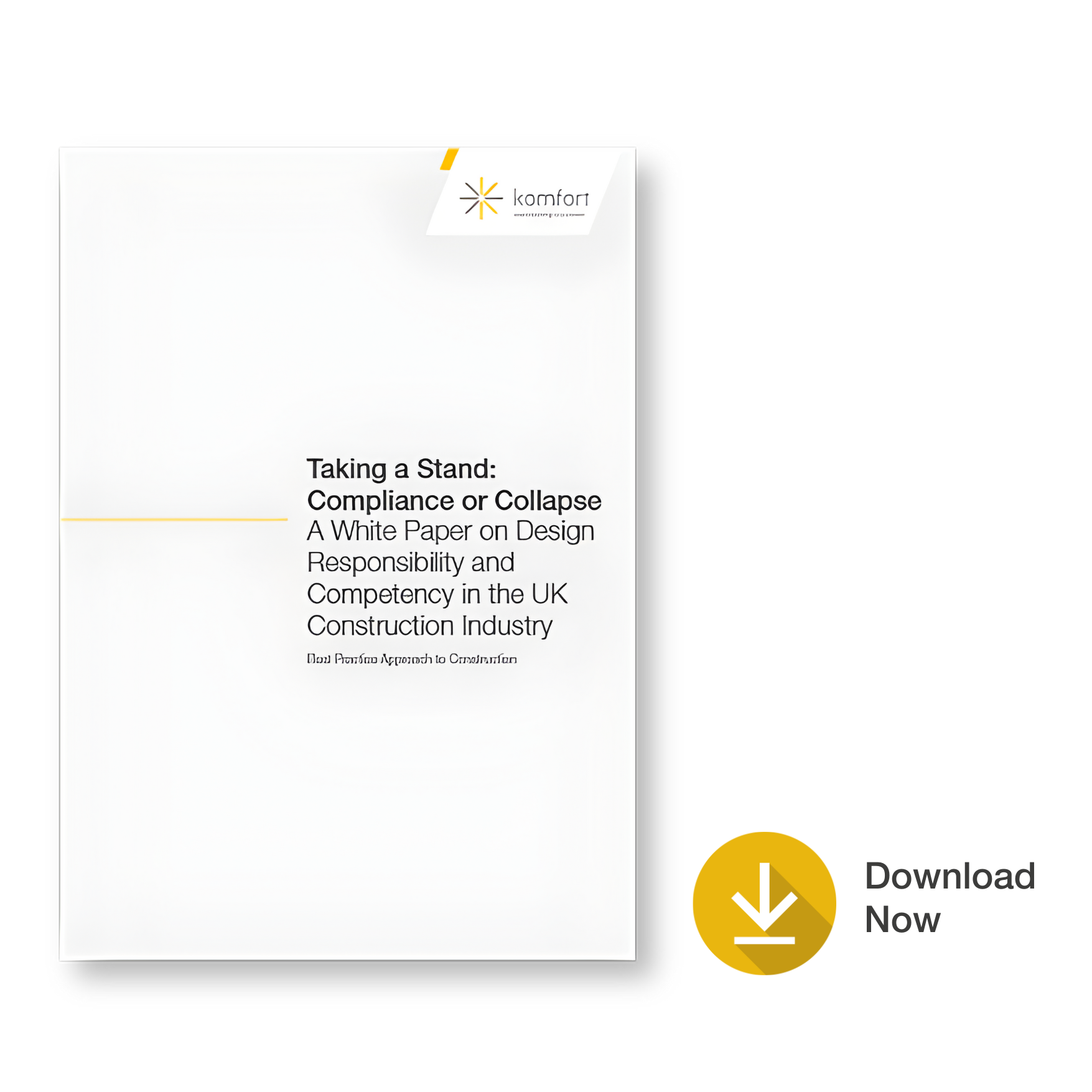Taking a Stand: Compliance or Collapse
A White Paper on Design Responsibility and Competency in the UK Construction Industry

Last month, a formidable force of industry leaders gathered at our Roundtable event in London. This was about more than discussion, it was about action.
Our mission is clear, enforce robust compliance, embed a true best practice approach across construction and foster accountability, education, standardisation and measurable improvement. We challenged outdated practices to drive concrete change.
The collective expertise around the table was inspiring. A huge thank you to:
– Iain McIlwee, Finishes and Interiors Sector
– Louise Grimes, Chartered Institute of Architectural Technologists (CIAT) & M1NT Studio Ltd
– Amritha Achuthan, Laing O’Rourke
– Alice Parker, Ridge and Partners LLP
– Michael Riley, BDP (Building Design Partnership Ltd)
– Geoff Wilkinson, Wilkinson Construction Consultants Limited
– Stephen Hamil, NBS | Powered by Hubexo
– Priti Gadani, Jim Smith, Neil Paddock & Suzanne Walter, Komfort Partitioning
The UK construction industry is at a critical juncture. Following decades of systemic issues—from the routine transfer of design risk to a deepening competency gap—a recent roundtable, “Taking a Stand: Compliance or Collapse,” didn’t just diagnose the problems; it mandated a clear path forward.
This white paper, driven by Komfort Partitioning Solutions and a panel of industry leaders, offers a stark warning and an immediate action plan for achieving true compliance and accountability in the built environment.
The Triple Threat: Why Design is Failing
The core failures identified stem from three major issues that are structurally undermining safety and quality:
The Breakdown of Early Engagement: Critical compliance checks and specialist manufacturer input are frequently deferred until RIBA Stages 3 or 4. This is a direct contradiction of the requirement to “plan, manage, monitor” at Stage 2. This deferral often results from client budget pressures and a dangerous lack of “common sense” to proactively test design intent, leading to “designing the undeliverable”.
The “Triple Threat Clause” in Procurement: The popular design-and-build procurement model has normalised the contractual transfer of design responsibility down the supply chain. Specialist subcontractors are often forced to sign contracts making them responsible for elements of design they did not create or specify. This creates an accountability vacuum where “nobody takes responsibility” for compliance.
The Competency Gap
There is a major concern about the decline in industry competency, with many young people entering the industry from education lacking crucial knowledge. Complicated, isolated regulations and a lack of time for technical directors to mentor younger staff compound this gap.
Action Required: Our Immediate Mandate for Change
The white paper moves beyond diagnosis to forge a consensus on tangible, actionable solutions agreed upon by all participants, who represented the full design-to-delivery lifecycle.
1. Mandate Early Compliance Checks
Compliance must shift upstream. We must:
Mandate specialist manufacturer engagement and compliance checks by the end of RIBA Stage 2. This early collaboration is key to preventing unrealistic concepts and ensuring design expectations can be met.
Eliminate contractual clauses that unfairly transfer unverified design liability down the supply chain.
2. Standardise Process, Not Product
While standardising products is seen as a risk to design aesthetics, standardising the process is critical. This involves:
Adopting a Best Practice Approach and a standardised process across all disciplines.
Integrating this standardised process within the education syllabus.
Fostering a culture of accountability where individuals apply an instinctive approach that challenges “why, what and how” they are driving the design.
3. Leverage Technology and Partnership
The path to compliance is supported by technology and collaborative frameworks.
Technology as a Game Changer: Platforms like NBS can create a transparent, auditable trail of knowledge, linking specifications to certified performance data and capturing variations—the core of the Golden Thread Ethos.
Enforce Gateway 2: The most direct regulatory fix is enforcing Gateway 2, ensuring works cannot commence until there is a full, approved, and compliant design plan.
Build Specialist Partnerships: Design practices must create long-term, consistent partnerships using “design partner frameworks” with specialist manufacturers and independent regulatory bodies.
Download the White Paper Today
The transition from “Compliance or Collapse” demands a collective investment of time to build collaborative relationships and the competency required for a truly safe and compliant built environment.
Download the full white paper, “Taking a Stand: Compliance or Collapse,” to read the full findings and join the movement to drive tangible, immediate change.
Komfort Partitioning is holding its next Call-In event on ‘Investment’ in November to address this issue and deliver tangible outcomes.


